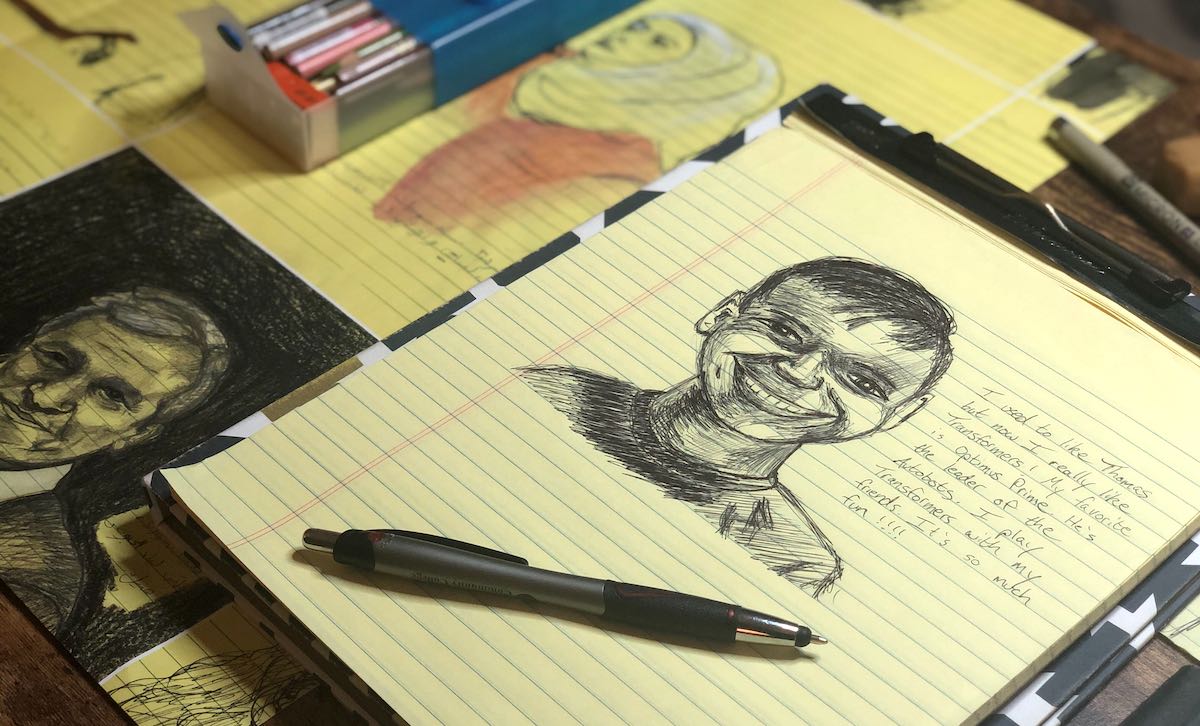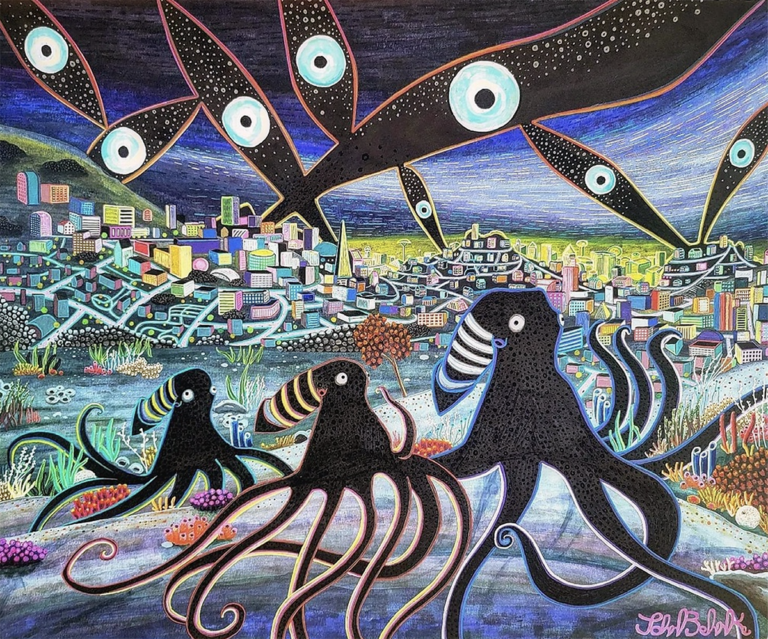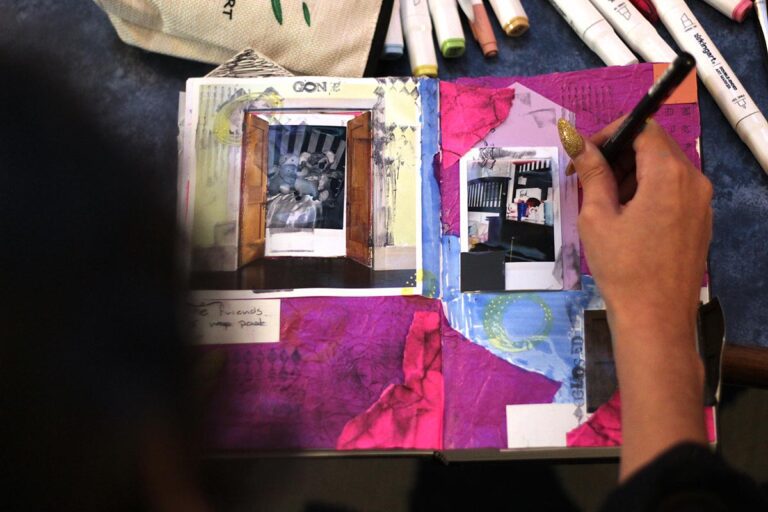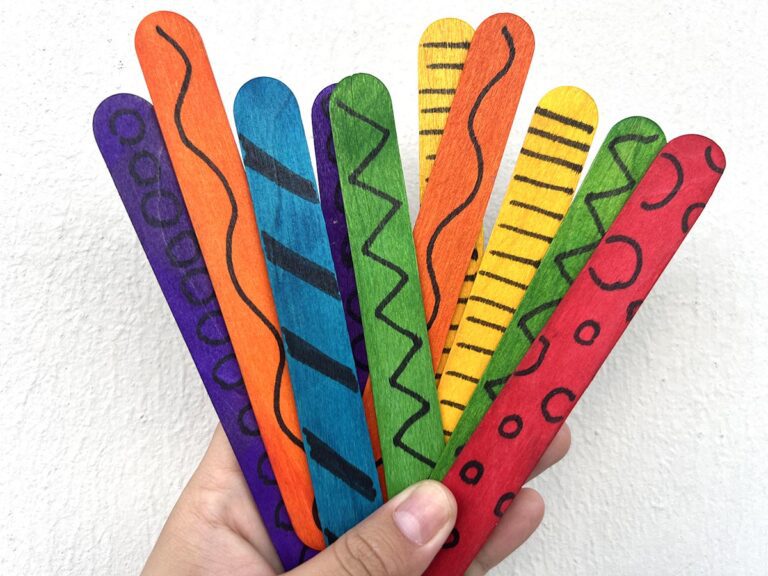Art Education and the Coronavirus (COVID-19)
Many art educators are taking on the challenge of creating eLearning activities for their students during the coronavirus pandemic. One of the biggest hurdles is the limited access students have to technology and/or art materials. Our students rely on us for a variety of resources in the classroom. Now that many schools have transitioned to eLearning, our students are trying to create with next to nothing at home.
How can we develop meaningful content with so little to work with?
Put yourself in your students’ shoes, and imagine what supplies you would have at home. This may be limited to paper, pencil, ink pens, cardboard, etc. Start with a list of household materials and go from there. Give your students options to meet their needs, but also their access to materials. You want to engage everyone with your content, and not focus on the quality or quantity of materials.
Time Document Portraits
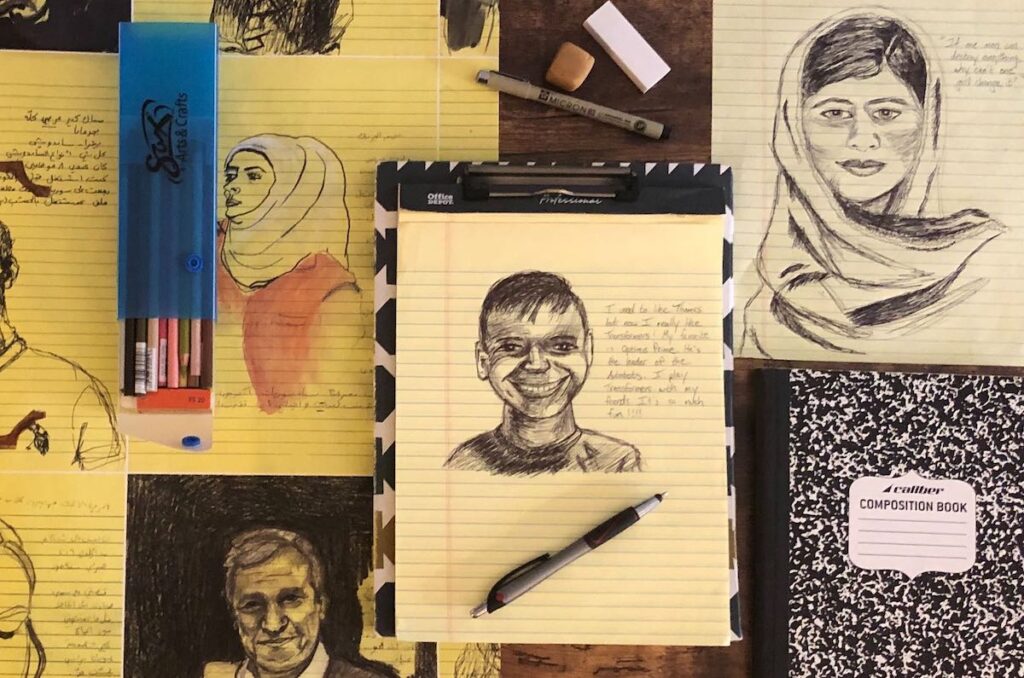
One theme you can share with your students during this time is that artists often respond to the world around them in their artmaking. One such woman is Lebanese artist, Mounira Al Solh. She created a series of work drawing portraits of refugees and writing down what she learned from their conversations within the artwork. Her project addresses humanitarian and political issues in Syria and the Middle East.
Step One: Introducing Work to Students
Your students may have access to the internet and applications like Google Classroom, or they may have absolutely no online access whatsoever. You can share Al Solh’s work digitally by providing links to exhibitions like this one at the Art Institute of Chicago in 2018, or you can create and print packets of information and images for students. Hopefully, your district has made arrangements for families to pick up paper materials, or have them delivered.
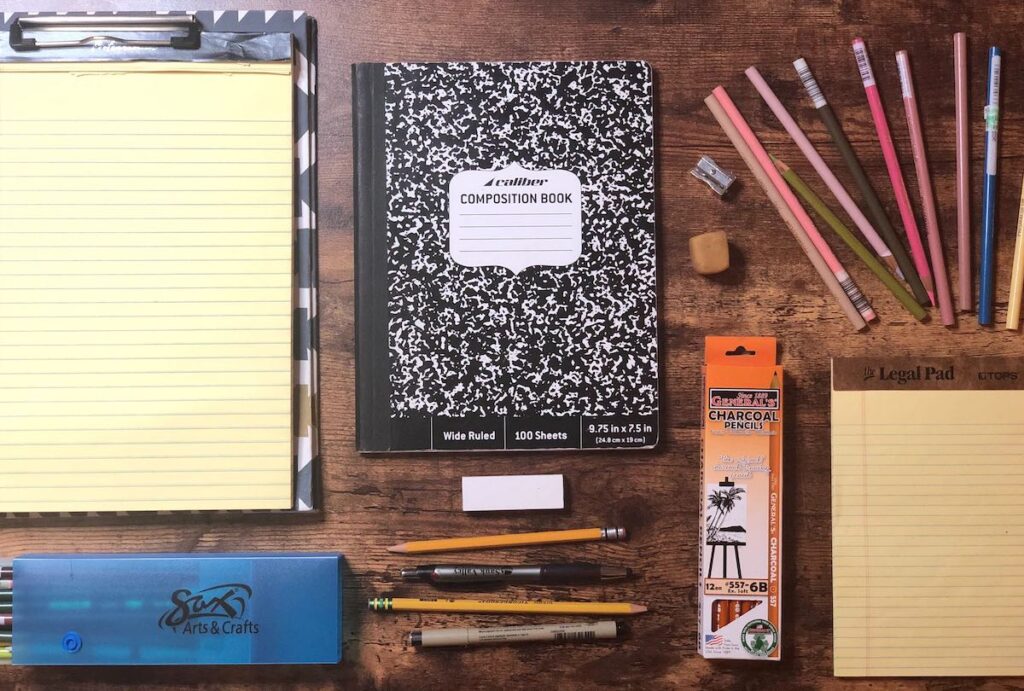
Students could record their responses and opinions about the artist’s time document portraits. You could also have students read or watch interviews from the artist. The concept and process are probably unlike any they have ever seen before. If you’re using an online platform where students can leave comments, there may be an opportunity to pose more questions and have ongoing discussions. If you have students who will be working from a paper packet, leave room for them to write their thoughts about the work.
Step Two: Ask Questions
- What do you think about Al Solh’s choice of materials?
- Can fine art be created using lined paper and pen?
- Why do you think the artist created her portraits on finer paper or canvas?
- What do you imagine her subjects talked about while she sketched their portrait?
- Why is the topic of Syrian refugees important to Al Solh?
- How does embroidery change or add to Al Solh’s message?
- How do you record your own experiences in daily life?
- How are social media posts, journaling, sketchbooks, scrapbooks, etc. similar to Al Solh’s work? How are they different?
- How does the artist create a range of value?
- How are all the portraits in the series unified? How are they different from one another?
Step Three: Students Create Their Own Time Documents
Review with students how artists respond to the world around them. How does Mounira Al Solh respond to current issues in our world? Ask students to think about what’s happening to them currently? Their school has been closed. They can’t see their friends. They are quarantined in the house and are now participating in eLearning or distance learning. This is a very unique time in our history, and certainly for our students. Ask them to think about how they can comment on their experience as they create artwork moving forward.
Inspired by Mounira Al Solh, ask your students to create a series of their own time documents. They are currently in quarantine and spending a lot of time at home. This could be an opportunity to sketch family members as well as an interview or have a conversation with the subject to write in the artwork.
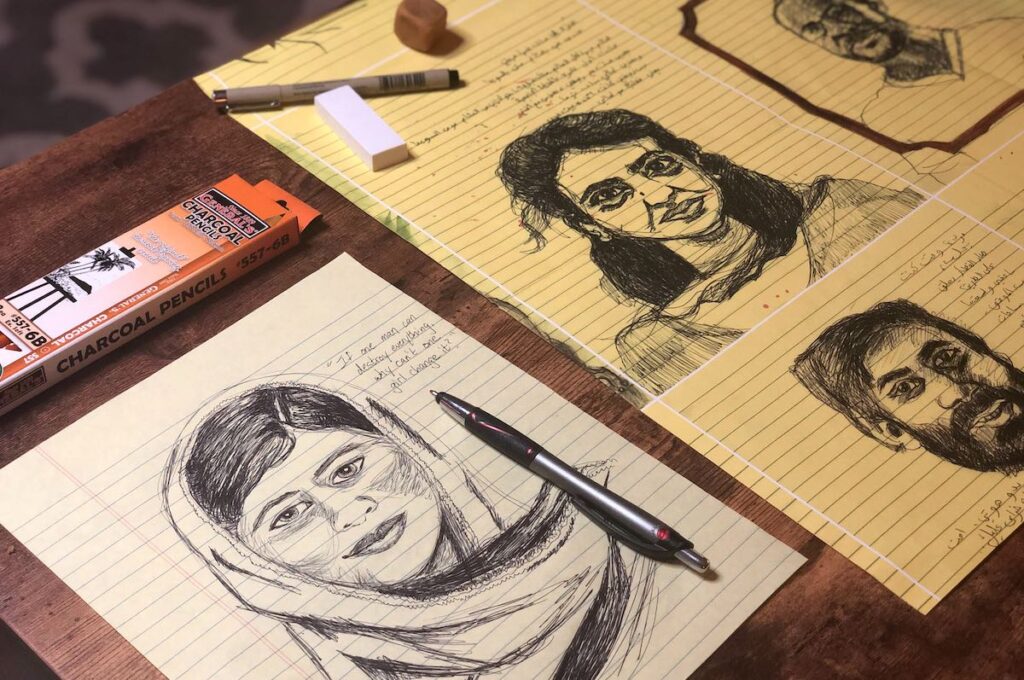
Remind students of facial proportions and any portrait drawing skills they may have previously learned. You may include previous handouts, links to tutorials, or even film yourself giving a brief demonstration. Any handouts could be added to your materials digitally and in paper packets.
Stress the importance of creating a range of value, whether shading with a pencil or creating hatch marks or cross-hatching with a ballpoint pen. These materials should be relatively accessible. Al Solh’s work is primarily done on lined yellow paper. Students could use their notebooks or really any paper at home to complete their projects.
Finding Engaging Portrait Subjects
While most of your students will have at least a few potential portrait subjects at home, they may not be particularly excited to draw each of their family members. Tell your students they could also use their phones or computers to connect with friends or extended family to create their time documents. Using the same approach, students would draw the subject from observation and write notes about their subject from their conversation. This can be a great exercise in interviewing, creating visual biographies, and honoring the people your students care about most.
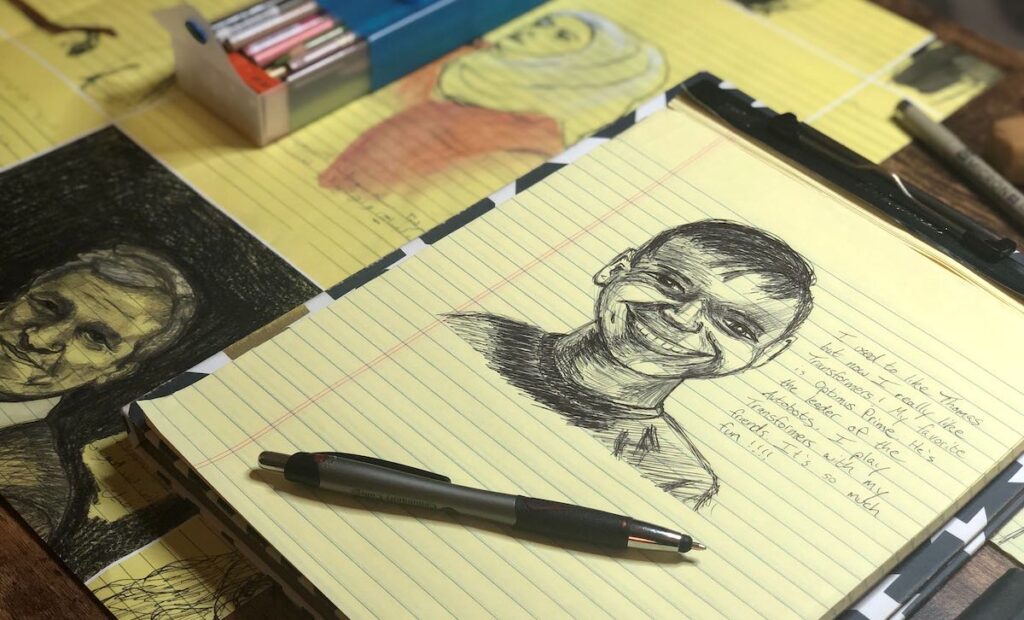
Some of your students may have few family members at home and little to no access to things like FaceTime or Zoom. You may also suggest that students could find portrait subjects in books or magazines. Students could draw portraits of their favorite actors, singers, musicians, historical figures, etc. Although they would miss out on the conversation or interview component of Al Solh’s work, these students could still write information about their subject’s life experience. They could share their own reasoning for choosing someone for their project. They could also incorporate song lyrics or quotes from their chosen subject. This application has some cross-curricular potential, as students could choose a figure from history or a literary work and share what they’ve learned in the process. The project combines visual art with text to inform and share human experiences.
Need more information? Learn more here.
Final Thoughts
eLearning is a challenge for all educators to provide engaging content in challenging circumstances. Fortunately, art educators are used to adapting how we teach to meet the needs of our students, our budget, our time constraints, etc. For us, this is just a new challenge, but not one we can’t handle.
The limited access to materials and resources can seem daunting, but just because those are limited, doesn’t mean that we can’t still create engaging content to help students develop skills and express themselves creatively. This is a great opportunity to continue sharing contemporary artists with students and get them thinking and discussing their opinions about art in today’s world.
How are you approaching the challenge of eLearning with your students?
What portrait artists might be good to share along with Mounira Al Solh?
What other artist examples incorporate visual art with text?
Magazine articles and podcasts are opinions of professional education contributors and do not necessarily represent the position of the Art of Education University (AOEU) or its academic offerings. Contributors use terms in the way they are most often talked about in the scope of their educational experiences.
